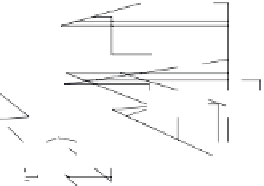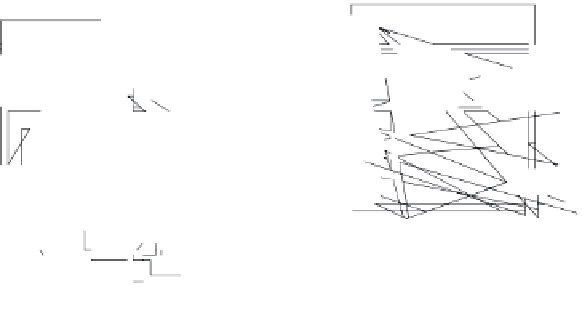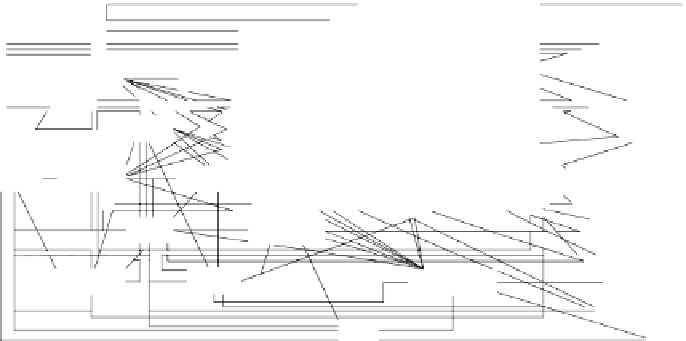Environmental Engineering Reference
In-Depth Information
Lake Muskoka was the fi rst inland lake to be invaded by the waterfl ea as a result
of regular boat traffi c from Lake Huron, one of the Great Lakes (Figure 4.9). It
quickly developed into a regional hub for invader spread for two reasons. First, all
of its outbound traffi c to inland lakes was to uninvaded lakes and, second, the total
amount of traffi c leaving was high (1452 people towed boats on trailers from the
lake each year). As lakes become invaded, the number of uninvaded lakes decreases
while the vulnerability of remaining uninvaded lakes changes. Thus, Lake Muskoka
is unlikely to continue to serve as a hub because most of its outbound traffi c is now
to other lakes that have already been invaded. On the other hand, the heavy out-
bound traffi c from Lakes Simcoe (3774 annual movements) and Kashagawigamog
(1840 movements) is predominantly to uninvaded lakes. These two lakes are devel-
oping into the most important invasion hubs (Figure 4.9). Lake Panache, which is
located in northern Ontario away from the current cluster of invaded lakes, supports
a large recreational fi shery and Muirhead and MacIsaac's study suggests it may well
be an important hub of the future. Thousands of lakes are still uninvaded and man-
agers need to know how the network functions so they can focus effort in the most
effective way to educate and/or regulate boaters.
You may be wondering whether a tiny waterfl ea is worth all the bother. Certainly,
it does not cause such economic or ecological harm as the zebra mussel. Its impor-
tance here lies in an ability to act as a general indicator of the means and pattern of
spread of aquatic organisms from lake to lake.
4.4.3
Invasion hubs
or diffusive spread?
Lakes in a landscape are obvious examples of 'discontinuous' habitat. It is because
assorted lakes are differentially linked into the network that invasion hubs can be
identifi ed for special management treatment. Other patchily arranged habitats -
such as oceanic islands, mountain ranges and forest remnants - can be expected to
Simcoe
Whitefish
Joseph
Go Home
Kash
Sugar
Wood
Loon
Mary
Panache
Barnard
Canning
Huron
Muskoka
Peninsula
Pigeon
Black Donald
Soyers
Manitou
Fairy
Temagami
Nipissing
Vernon
Rosseau
Lake of Bays
Ahmic
George
Harp
Skeleton
1989
1990
1991
1992
1993
1995
1996
1997
1998
1999
Fig. 4.9
Diagram of network traffi c from previously to recently invaded lakes based on records of fi rst reporting. Stages in
the development of the ever-increasing invasion network are indicated by the year in which lakes were invaded (from left to
right). Shaded boxes represent existing or developing network hubs. Thousands of lakes (not shown) are so far uninvaded.
(Lake Kashagawigamog is abbreviated as Kash.) (After Muirhead & MacIsaac, 2005.)










































































Search WWH ::

Custom Search